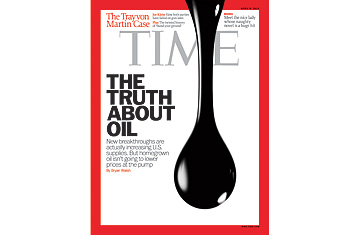
(2 of 6)
In the U.S., consumers face an extreme-oil paradox. We need more oil to achieve energy independence--and we're producing it in places like the Bakken shale formation in North Dakota--even as we are using less of it. A combination of recession, conservation and improved auto efficiency has helped the U.S. shed demand impressively. But demand in China, India and other developing nations has replaced it. Result: plentiful but expensive oil that translates into painfully high gas prices. Last year the average cost for a gallon of unleaded was $3.51, the highest on record, up from $2.90 a year before. On March 26 the national average was $3.90. That takes a chunk out of household budgets and threatens an already underwhelming economic recovery.
In an election year, gasoline prices can ignite volatile political debate. That's one reason President Obama showed up in Cushing, Okla., the main terminal for oil produced in the West and Canada, to promote a new pipeline that will deliver crude from Cushing to refineries along the Gulf Coast. "We're drilling all over the place right now," he said, defending his energy policy. Obama does not want to slip up on oil.
Not that long ago, the big worry about fossil fuels was how rapidly supplies were waning. Now new and unconventional sources of oil are filling the gaps. Ultra-deepwater reserves like those found off Brazil offer the promise of billions of barrels. Technological breakthroughs have unlocked what's known as tight oil in the shale rock of North Dakota and Texas, reversing what seemed like a terminal decline in U.S. oil production. Alberta's vast oil sands have given Canada the world's second largest crude reserves, after Saudi Arabia's, and offer the U.S. a friendlier crude dealer. As global warming melts the Arctic sea ice, an unexpected dividend is access to tens of billions of barrels of oil in the waters of the far north. "We've seen a paradigm shift over the past decade," says Daniel Yergin, chairman of the research group IHS CERA. "You look at tight oil and oil sands and deepwater, and you see the results."
Those results could be the problem. While unconventional sources promise to keep the supply of oil flowing, it won't flow as easily as it did for most of the 20th century. The new supplies are for the most part more expensive than traditional oil from places like the Middle East, sometimes significantly so. They are often dirtier, with higher risks of accidents. The decline of major conventional oil fields and the rise in demand mean the spare production capacity that once cushioned prices could be gone, ushering in an era of volatile market swings. And burning all this leftover oil could lock the world into dangerous climate change. "I'm less concerned about the absolute disappearance of fossil fuels than about the environmental consequences of pursuing what's left," says Michael Klare, an energy expert and the author of The Race for What's Left. There will be oil, but it will be expensive, dirty and dangerous.
The Bakken Boom
